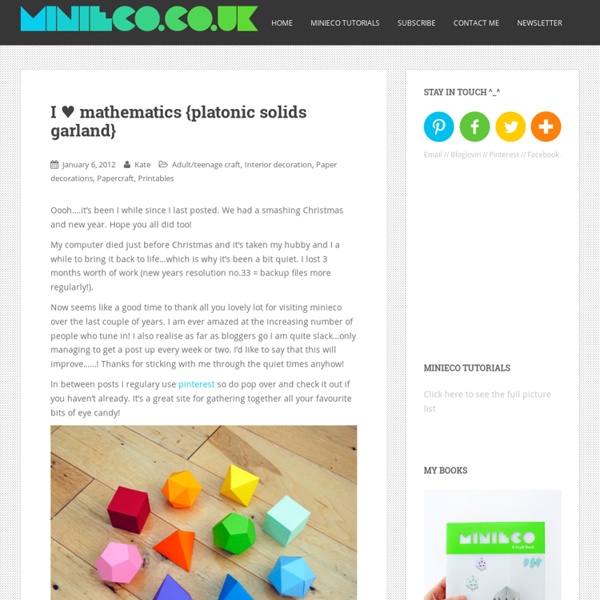How To: Create a Paper Cut Map of Your Favorite City Just Crafty Enough
I have a thing for maps, especially city maps. I love the way that admiring a map instantly reminds you of the myriad of reasons you love the city you live in. It can also quickly take you back to an incredible journey you took long ago, or catapult you forward in a longing reverie of a far-away place yet to be visited.
Weaving a Complex Ojo de Dios
Maybe you’ve made a god’s eye with a couple popsicle sticks at camp one summer in the hazy past, but have you considered the beautifully vast possibilities of this art form? South Carolina-based Etsy artist Jay Mohler has found a calling making Ojos de Dios (a.k.a. god’s eyes) with up to six sticks, twelve sides, and undulating intricate woven patterns. His creations are constructed from the very same humble materials that many of us associate with a camp craft — colorful yarn and sticks — plus, a healthy dose of ingenuity and a deep interest in Tibetan and Huichol artifacts and mandalas.
Basic Fraction Worksheets & Manipulatives
STW Filing Cabinet Logged in members can use the Super Teacher Worksheets filing cabinet to save their favorite worksheets. Quickly access your most commonly used files AND your custom generated worksheets!
Inkling: paper bird centerpiece
It was time to get serious about a spring table centerpiece and after much thought or at least five minutes of thought - I decided I needed some blue birds. To make these little paper birds, you will need: Paper to form the bird (I used kraft paper) Masking tape Pretty paper to cover the birds (I used blue rice paper) Glue
Skip Counting
Skip Counting by 2 and 5 – Worksheet Skip Counting by 2, 3, 4, 5, 6 and 7 – Worksheet Skip Counting by 10, 100 and 1000 – Worksheet Skip Counting by 6, 7, 8 and 9 – Worksheet Skip Counting by 2, 3, 4 and 5 – Worksheet
A Rose is a Rose?
Here's a new one! When is a rose not a rose? When it is picnic spoons. Really! These are fun and amazing. No one will guess what this is made of.
Maths
Mental Maths Worksheets When a child practices mental maths maths becomes quicker and simpler = maths mastery!
it's overflowing: Overflowing with Creativity #10
Overflowing with Creativity Crafts & Snacks Features 10 Candy Jar Etching ~ Crafty, Scrappy, Happy Pretty Cake Stand Tutorial ~ Uncommon Pinwheel Wreath ~ Loopy Loop Creations Hometown Canvas Art ~ Superfluous Toddler Boot Tutorial ~ Mommy to a Little Lady{bug}
sculptural paper orb lights
It’s wonderful to see so many DIY projects that take advantage of the humble paper globe light. Just when I think I’ve seen them all, I come across a new one that I love, like this version created by Heather Jennings of Poppy Haus. While browsing her local Anthropologie store, Heather was inspired by two things: the ingenuity of the displays, all made with simple, everyday materials, and the Rhododendron Chandelier. Adorned with handmade, sculptural paper flowers, the chandelier is amazing, but at $898, Heather thought it would it be the perfect candidate for a DIY variation.
diy best of: rope projects
Rope is one of our current obsessions, but it’s also one of those items that will never leave my love list. It’s just a fantastic material, one of humanity’s greatest inventions. Rope owes all of its strength, durability and beauty to its structure.
DIY Blue Mason jars
Happy Wednesday, friends! I know you’ve seen them everywhere…..blue mason jars! I think its the only way to make a delectable mason jar even more scrumptious! ha! I love how pretty tinted vintage jars are, but they aren’t cheap. seriously.



